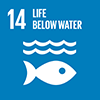Description/achievement of initiative
Cognizant to the potential of energy generation from coral and karstic formation, the objectives are as follows:
Recent interest in the science community on high-intense energy (UVR) led to the initiative. The initiative is in a trial stage (creating a prototype to test the idea).
For the first time, energy is recognized as a core part of the global sustainable development agenda of the United Nations. The aim of SDG7 is interconnected with the objectives of SDG14 and the voluntary commitment registered under COA #24052.
Implementation methodologies
For this initiative to be carried out, the following implementation methodologies are suggested:
1) Present the initiative in an international scientific community;
2) Consult and communicate with like-minded researchers and institutions;
3) Present the idea and be able to come up with a prototype and evidence-based results.
Arrangements for Capacity-Building and Technology Transfer
No arrangements for Capacity Building and Technology Transfer yet at the moment.
Coordination mechanisms/governance structure
The initiative, #OceanAction24052, was started as an idea in managing renewable resources. During a workshop in Marseille, South of France in 2013, an outdoor experience led to an observation of the karstic formation. The extreme heat experienced during the process of excursion cultivated curiosity unexplainable and sort of interesting.
During initial investigative research, the interest led to an established theory, "Reversible Reaction Process", pioneered by the French chemist, Claude Louis Berthollet.
Looking at other related research studies, the idea grew from the findings of other researchers, in particular, Dana Riddle in her feature article, "Playing with Poison", an article that documents the results of an experiment designed to examine the effects of artificially-produced UVR on symbiotic zooxanthallae and coral's exposure to varying intensities, which reinforces the strong interest in UV for future innovations, e.g. solar cell design, heat-exchangers, energy storage, separation of water molecule, hydrogen fuel, carbon capture and harvesting of other ocean-mineral resources. e.g. lithium.
To seek audience and support, the proponent decided to take the initiative to the scientific community. At the United Nations, there is an opportunity to present the idea under the program, Communities of Ocean Action.
The initiative should be governed by a team of competent scientists and researchers.
Consultation with like-minded researchers is currently the only tangible means of looking at the potential of harvesting and storing huge amount of energy from coral and karstic formation. The direction in which the idea is leading to, gave us a clearer path on how to tackle the engineering, physics and mathematics aspects.
Partner(s)
IRENA, Canadian Science Policy Centre, individual researchers and stakeholders



 01/2018
01/2018
 Time-frame: January 2018 - January 2020
Time-frame: January 2018 - January 2020